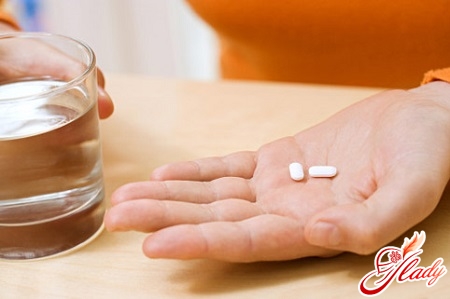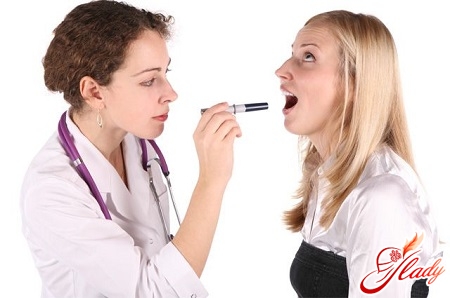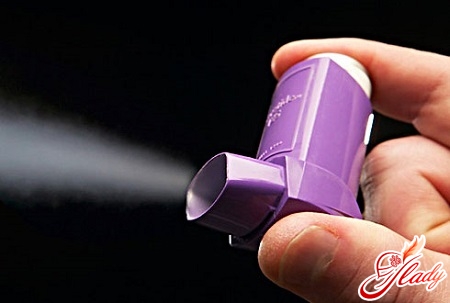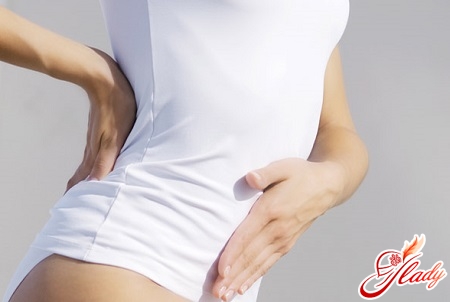
Since childhood, our grandmothers and mothers forced usdress warmly to avoid getting sick and catching cold feet. This is not without reason. If feet are constantly exposed to cold temperatures, various gynecological diseases can develop, including adnexitis (otherwise inflammation of the uterine appendages). It cannot be said that cold feet are the main cause of possible diseases, rather, it is a kind of starting factor for many inflammatory processes.
Inflammation of appendages
The female body is very vulnerable and susceptibleexposure to external factors. Stress at work, frequent moves, poor nutrition - all this and much more weakens the immune system of our body and makes it vulnerable to any diseases, including inflammatory processes. How to avoid them or what to do when the disease has already occurred? Inflammation of the uterine appendages is considered a very serious gynecological disease. The danger of this disease is that it can proceed unnoticed and asymptomatically. And although it does not pose a particular threat to the life of a girl or woman, it can still lead to the most dire consequences - affect the ability to bear children. This inflammatory disease in one out of five cases leads to infertility.
The concept and main causes of inflammation of the appendages
So, first of all, we need to figure this outthe very concept of appendages. The appendages include all the internal organs of the female reproductive system adjacent to the uterus, namely the fallopian tubes, ovaries and ligaments. In a normal state, the uterine appendages are sterile and do not contain any microorganisms. As is known, the uterine appendages are located deep inside. The main ways of their inflammation can be the following:
As it has already become clear, the main reasonInflammation of the uterine appendages are microorganisms that penetrate into the uterine cavity in one of three ways. Inflammation of the uterine appendages in medicine is called adnexitis. Currently, this term is used less and less, the name "salpingitis" has come into use, meaning "inflammation of the tube", or "oophoritis", which means "inflammation of the ovarian tissue". The most common name used in medicine to reflect this disease is considered to be "salpingo-oophoritis".
Symptoms of inflammation of the uterus
Symptoms and signs of this disease cancan be very different. Their manifestation depends on some factors. For example, they can depend on the course of the disease. This can be acute stress: in this case, the symptoms will be pronounced. In the chronic form, the symptoms are barely noticeable. The manifestation of symptoms depends on the pathogenicity of the microorganism that has entered the uterine cavity and its type. The ability of the female body to resist these microorganisms and fight the inflammatory process that has arisen plays a significant role. Here, everything depends on how strong the human immune system is. One of the most common symptoms that occur with inflammation is pain in the lower abdomen, which can be absolutely different in strength and nature (sharp and dull pain are possible). Often there is an increase in body temperature, sometimes even up to 40 degrees, chills. An upset stomach is possible, manifested in the form of diarrhea, sometimes nausea, even vomiting, but, as a rule, it does not recur more than once. Not only the gastrointestinal system but also the urinary system reacts to inflammation. The woman experiences pain during urination, which becomes less and less. Discharge from the genital tract is considered another symptom of inflammation. Discharge can be absolutely different, here everything depends on the nature and strength of the microorganisms that have penetrated. It happens that the discharge is purulent and even bloody, but this is already in the most severe cases.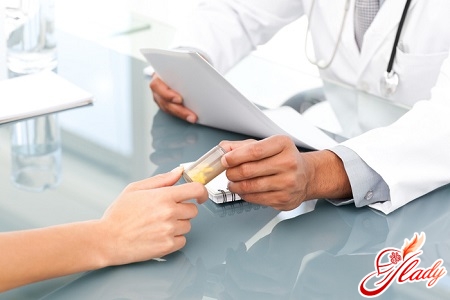
Treatment of inflammatory process
If you treat inflammation of the appendages correctlymethod, the results will be noticeable after a few days. However, this does not mean that you should stop treatment and forget about the problem. Initially, it is necessary to determine the exact cause of the disease. After that, treatment is prescribed, including antimicrobial, anti-inflammatory and restorative therapy. It is worth saying that the healing process is quite long, requiring completion. So, inflammation treatment includes the following points:
Treatment of inflammation with antibiotics
Very often in the treatment of inflammation there arebe antibiotics. Multicomponent therapy is considered more effective, the purpose of which is to affect different groups of microorganisms. Multicomponent therapy includes the following antibiotics: third-generation cephalosporins (ceftriaxone), inhibitor-protected penicillins (antibiotics such as amoxiclav), erythromycin (macrolide) and other drugs that affect flora living in an oxygen environment. In order to eliminate the so-called anaerobic flora, which can live in an oxygen-free environment, nitroimidazole derivatives (metronidazole and others) are prescribed. Treatment also includes antifungal drugs. Among them may be nystatin, diflucan and others. The first few days, all these drugs are administered as injections (until the patient's condition improves). Then you can switch to medications in the form of tablets and reduce the doses. The listed antibiotics should help on the first day after their use. If there is no improvement, surgical intervention should be considered.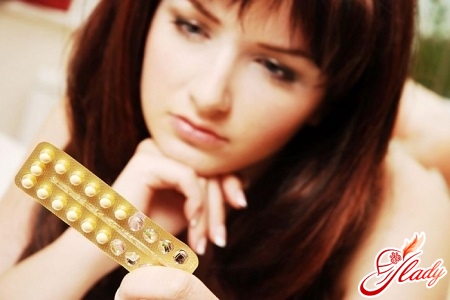
Types of inflammation of appendages (adnexitis)
Like any disease, inflammation of the appendages(adnexitis) has acute and chronic forms. The symptoms of acute and chronic adnexitis differ from each other. For example, during acute adnexitis, sharp pains in the lower abdomen are observed, radiating to the anus. The pains are intense. The acute form is characterized by an increase in body temperature, chills, weakness, bloating and other symptoms. If the acute form of inflammation is left unattended, in a week it can develop into a chronic form, which is characterized by dull pain in the lower abdomen, menstrual irregularities, pain during intercourse, decreased libido, diseases of the genitourinary system (cystitis, pyelonephritis). A woman with a chronic form of adnexitis often experiences nervousness and decreased ability to work. Acute adnexitis includes two phases. The phase with a predominance of aerobic flora is called toxic, because here symptoms of intoxication of the body are observed. There is also a septic phase. Here, anaerobic flora joins in, the symptoms of adnexitis become more severe and complications develop. It is during this phase that the so-called purulent tubo-ovarian formation is formed, and there is a risk of perforation. Chronic inflammation also occurs in two ways. The first way is infectious-toxic. Here, pathological secretion increases, changes occur in the blood formula, exudative processes begin in the appendages, as a result of which their soreness increases. The second way of chronic inflammation is neuro-vegetative. There is a deterioration in well-being, mood becomes unstable, work capacity decreases, endocrine and vascular disorders occur.
Diet with inflammation of the appendages and prevention of disease
During any illness, a huge roleplays a role in how strong the human immune system is. If you follow the right diet during inflammation of the uterine appendages, you can strengthen the body's resistance to infectious agents and, at the same time, improve metabolic processes in the inflammation center itself. The diet during acute and chronic adnexitis should be hypoallergenic. Such a diet completely excludes egg whites, chocolate, mushrooms, sweets and other products. In addition, it limits the amount of salt and carbohydrates. During inflammation, it is recommended to subject food to heat treatment: boil or stew it. The daily diet should include 2300 kcal, including 100 g of proteins, 300 g of carbohydrates and 70 g of fat. Even if there is no exacerbation of adnexitis, it is still recommended to eat a balanced diet containing a sufficient amount of useful vitamins and protein. Prevention of inflammation of the appendages is relevant for women suffering from sexually transmitted infections, for those who use intrauterine contraceptives (IUDs), for women who have undergone surgery on the genitals, and after abortions. As has already become clear, the consequences of adnexitis can be the most terrible, so prevention is very necessary. Firstly, it is necessary to exclude factors that can contribute to the development of an acute form of the disease. Among such factors are hypothermia, various stresses, sexually transmitted infections, abuse of spicy food, alcohol and many others. Secondly, it is recommended to use rational contraception, thereby avoiding abortions. If necessary, you should resort to medical termination of pregnancy. Thirdly, it is very important to conduct a full complex therapy of various inflammatory diseases in the pelvic area in a timely manner. Fourthly, it is necessary to make it a rule to visit a gynecologist every six months - a year.
What conclusions should be drawn
Inflammation of the uterine appendages isa disease that in its advanced form can deprive a woman of the opportunity to become a mother. Treatment of inflammation in the appendages is possible, but the disease itself can lead to sad consequences. It is better to prevent the problem from arising than to solve it later. Monitor your health, visit your gynecologist regularly, exclude any possibility of this disease. Your health is only in your hands. Strengthening the immune system, proper nutrition, warmth - all this will help you reduce the risk of this disease.




